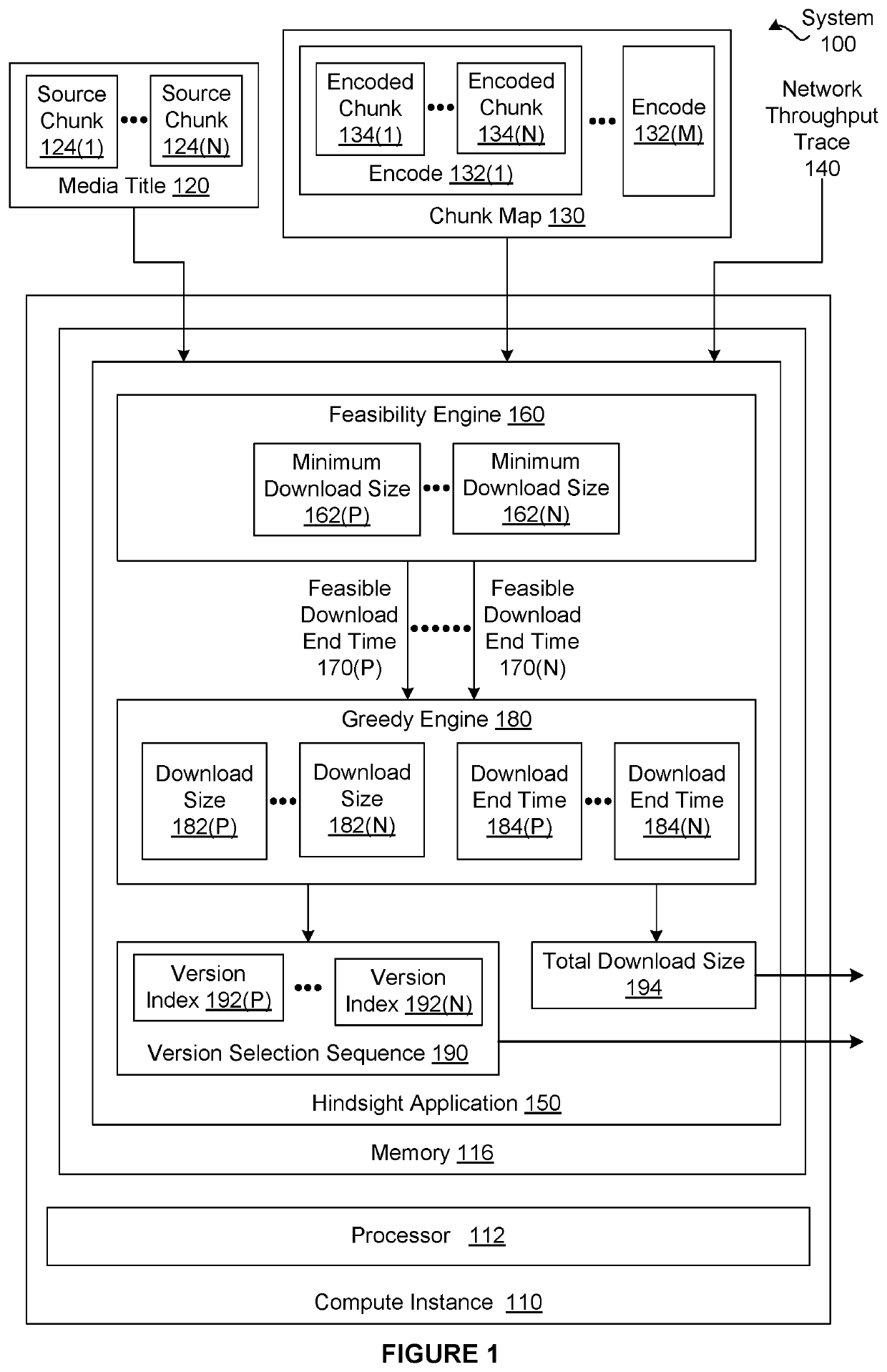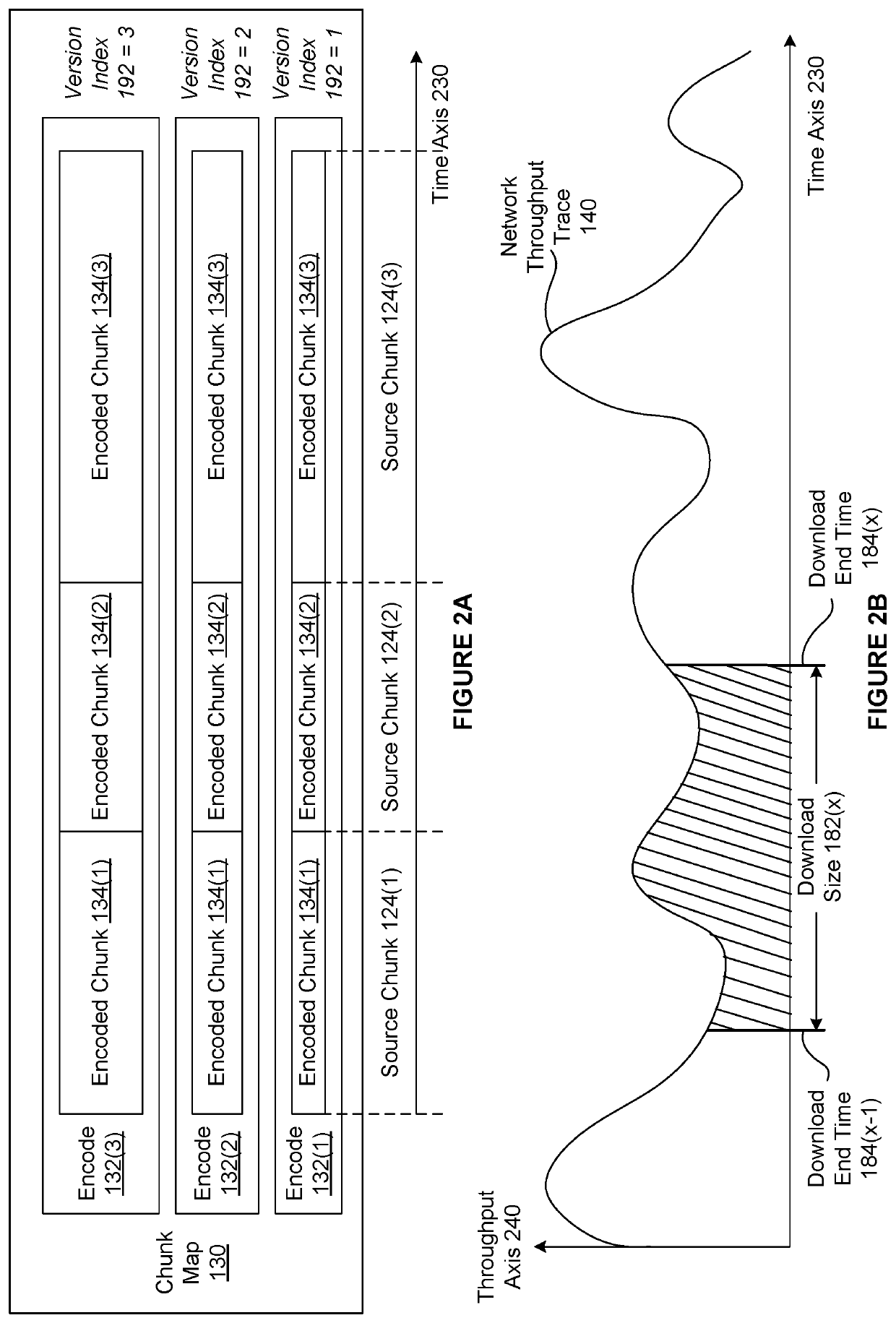Techniques for evaluating a video rate selection algorithm based on a greedy optimization of total download size over a completed streaming session
a video rate selection and algorithm technology, applied in the field of streaming video technology, can solve the problems of inability to efficiently solve the np-hard problem using known techniques, prohibitively time-consuming to evaluate the video rate selection algorithm, and inability to efficiently determine the upper bound of the visual quality, time and computational resources required, etc., to achieve the effect of efficient determination of the upper bound of the visual quality, time and computational resources
- Summary
- Abstract
- Description
- Claims
- Application Information
AI Technical Summary
Benefits of technology
Problems solved by technology
Method used
Image
Examples
Embodiment Construction
[0002]Embodiments of the present invention relate generally to streaming video technology and, more specifically, to techniques for evaluating a video rate selection algorithm over a completed streaming session.
Description of the Related Art
[0003]A typical video streaming service provides access to a library of media titles that can be viewed on a range of different client devices, where each client device usually connects to the video streaming service under different connection and network conditions. In many implementations, a client device that connects to a video streaming service executes an endpoint application. The endpoint application implements a video rate selection algorithm that attempts to optimize the visual quality experienced during playback of the media title on the client device while avoiding playback interruptions due to re-buffering events. In these types of implementations, for each source chunk of a media title, the video rate selection algorithm attempts to ...
PUM
 Login to View More
Login to View More Abstract
Description
Claims
Application Information
 Login to View More
Login to View More - R&D
- Intellectual Property
- Life Sciences
- Materials
- Tech Scout
- Unparalleled Data Quality
- Higher Quality Content
- 60% Fewer Hallucinations
Browse by: Latest US Patents, China's latest patents, Technical Efficacy Thesaurus, Application Domain, Technology Topic, Popular Technical Reports.
© 2025 PatSnap. All rights reserved.Legal|Privacy policy|Modern Slavery Act Transparency Statement|Sitemap|About US| Contact US: help@patsnap.com



